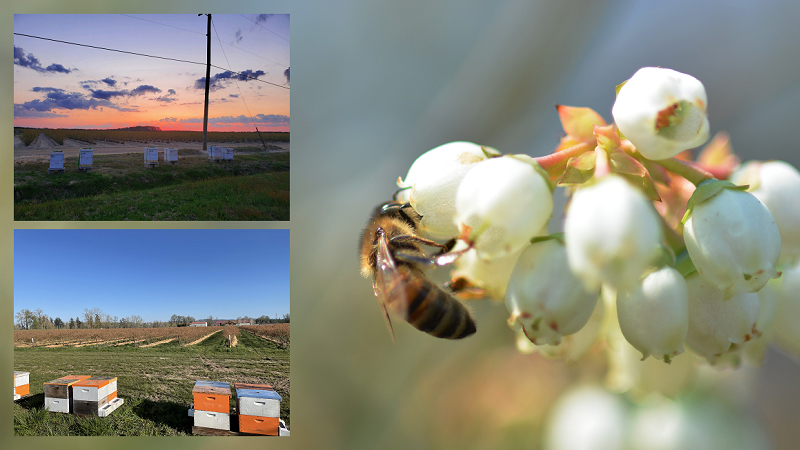New Technology Guides Vineyard Management Decisions

David S. Ebert, the Silicon Valley Professor of Electrical and Computer Engineering at Purdue, and Christian Butzke, enology professor for the Purdue Wine Grape Team, examine a sensor-created soil map of a West Coast vineyard. Ebert and Butzke co-founded the startup VinSense LLC with Larry Ebert, Sue Ebert and Phillip Owens, associate professor of agronomy at Purdue, to commercialize the agriculture technology. Photo: Purdue Research Foundation
Grape growers may soon have access to technology that gives them real-time data about soil conditions in their vineyards.
VinSense LLC has received a grant from the National Science Foundation to fund expansion of a software program that helps growers make irrigation and other vineyard management decisions based on climate, weather, soil variation, and other factors. With the data the software provides, growers should be able to optimize everything from harvest decisions to fermentation techniques, according to David Ebert, VinSense CTO.
Purdue University licensed the technology to VinSense, which is now working to commercialize it. Two test vineyards are currently trialing the system – Robert Biale Vineyards in Napa, CA, and Tres Sabores Winery in St. Helena, CA.
Julie Johnson, Owner of Tres Sabores Winery, says her dry-farmed operation implemented the technology a year ago. Within the vineyard’s 12 acres, there are four sets of monitoring devices that go down as far as 8 feet into the soil, as well as a complete weather station. The in-ground sensors measure soil moisture and temperature at four different levels and were strategically placed in different parts of the vineyard to test areas with different soil profiles and different varieties of grapes.
The idea is that the winery will be able to study the year-over-year data to compare the soil chemistry, timing of veraison, Brix, and other data that will help guide vineyard management decisions going forward.
“For example, if we know the data shows that the soil is more devoid of water than it was in previous years at a certain point, we can use that data to make some decisions – perhaps taking off crop or working with the canopy,” Johnson says. “There are a myriad of opportunities to make changes based on the data.”
The in-ground monitors communicate with the VinSense software and upload the soil data almost instantaneously. Johnson says this is beneficial because she doesn’t have to send people out into the field to monitor.
She describes the data as a 3-D profile of what’s happening in the vineyard.
“As we’re measuring, testing, and recording the measurements in-ground as well as in the grape canopy, the combination of those two things – plus the third element, which is just tasting and observation – it’s going to help us be a lot more intelligent about our grape-growing practices,” she says.
She adds that this type of system could be instrumental in helping growers extend the lives of their vineyards, because the predictive system can help with soil conservation and resource management. In addition, it can help growers make sound decisions about canopy and crop load management.
Making Real-Time, Data-Driven Decisions
The system could be especially beneficial for vineyards that irrigate, Johnson says, because looking at temperature and moisture at multiple levels in the soil gives growers a better picture of the root systems, and what’s happening in terms of nutrient and water exchange below ground.
“Besides the whole vine health and soil health relationship, helping vineyards to manage their use of water is obviously important for everyone,” Johnson adds.
The VinSense system has been very helpful in this regard for Robert Biale Vineyards. Winemaker Tres Goetting says the system, implemented in 2014, has allowed the operation to further understand the relationship between soil moisture content and vine watering needs throughout the growing season.
“The best advantages are that it gives a visual interpretation based on real-time data that allows us to adjust our watering program,” he says.
And that’s a big deal.
“You want to be the most intelligent person you can be these days about water management, no matter where your vineyard is,” Johnson says.









